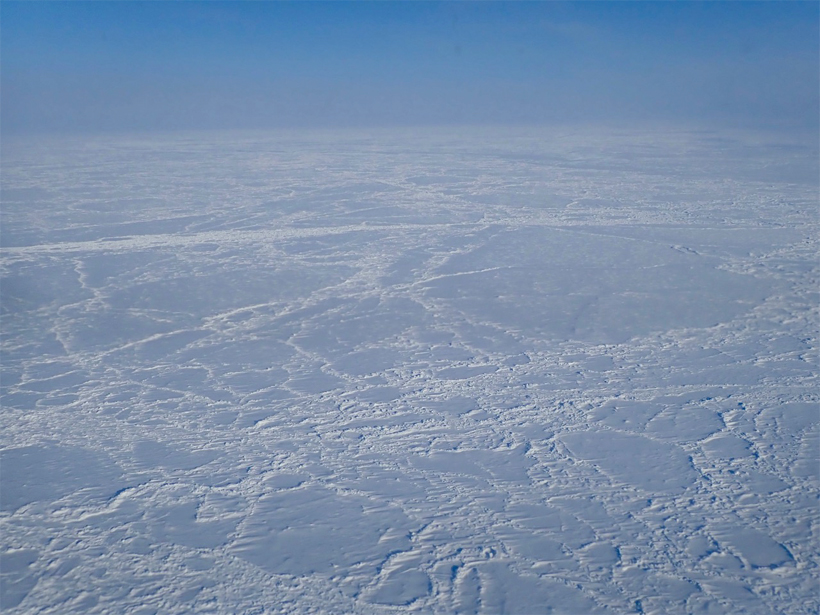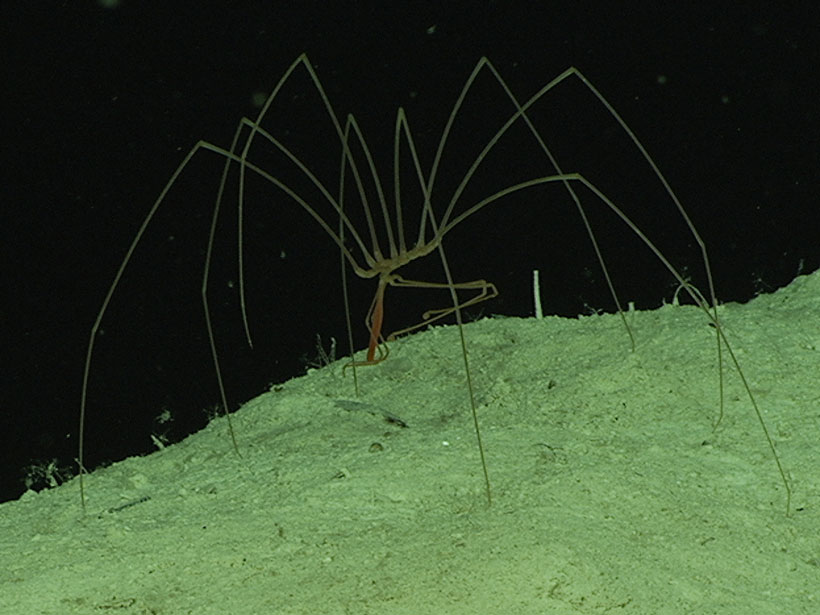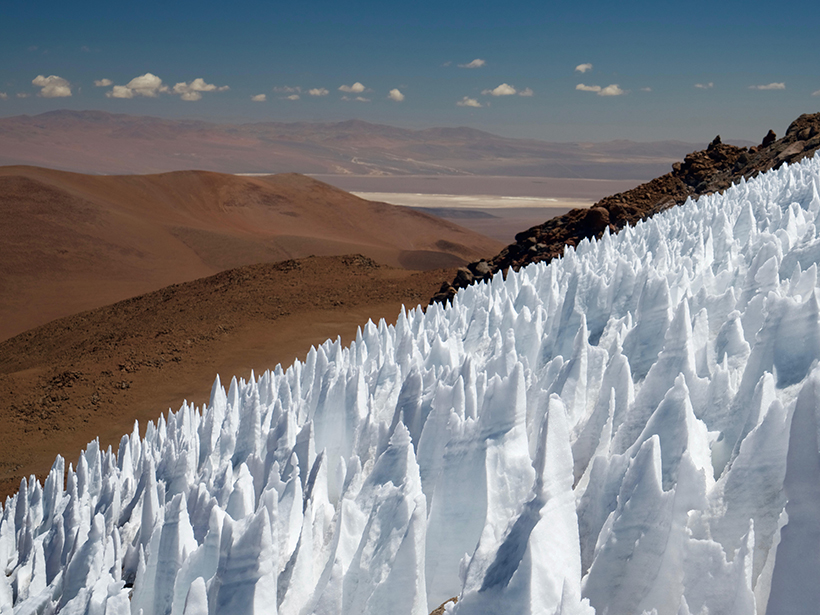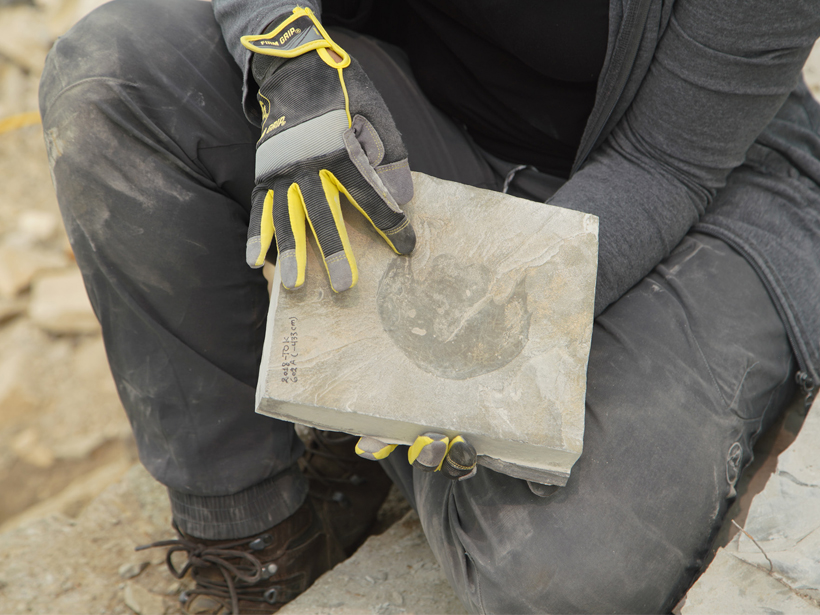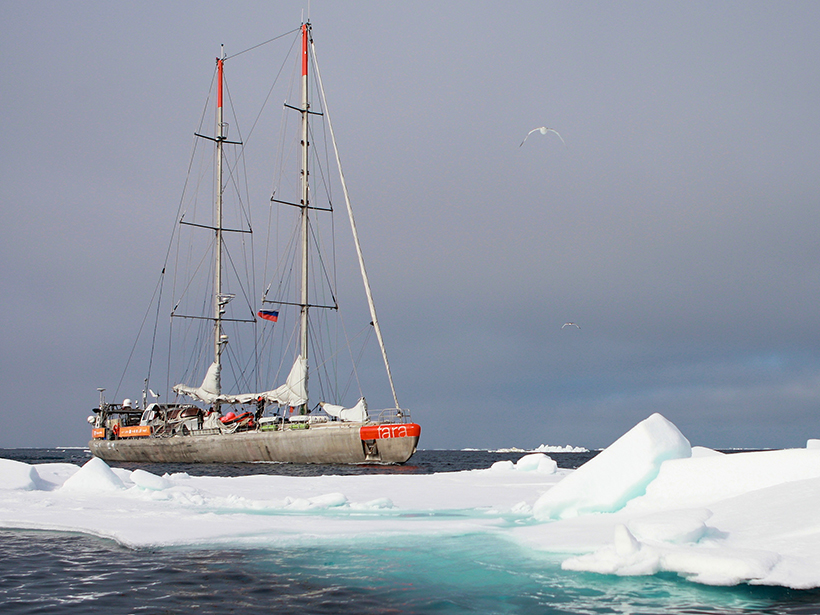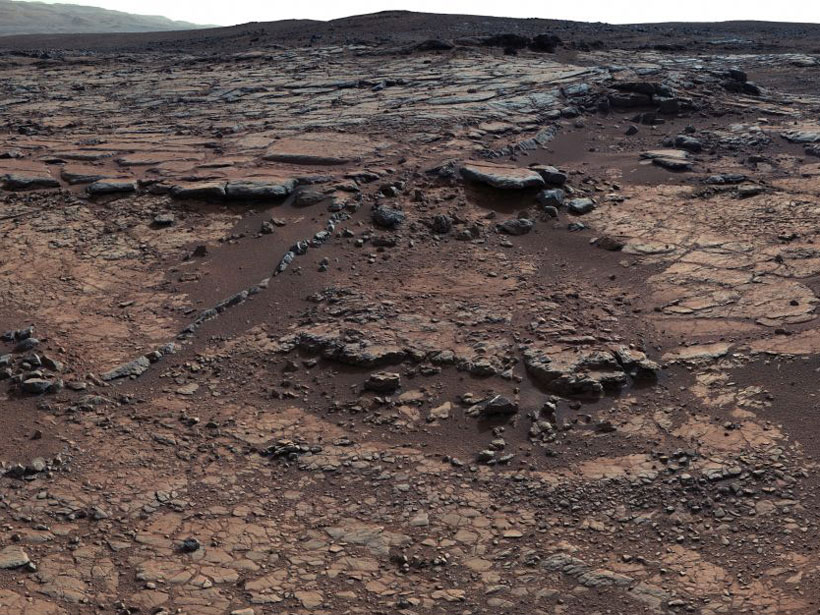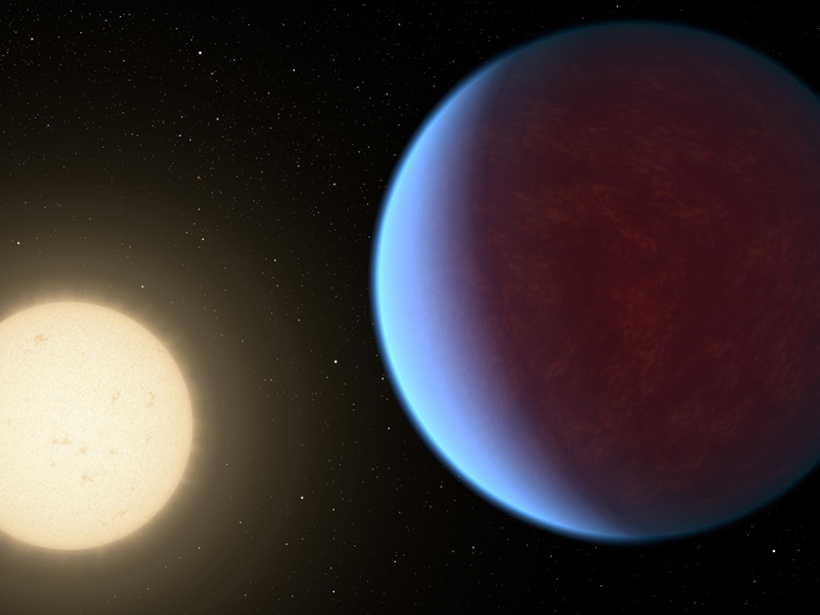Fifty years after the birth of modern plate tectonics theory, a group of researchers highlights three key examples of how our planet’s shape-shifting outer layer has altered our climate.
life as we know it
Extreme Life and Where to Find It
Life finds a way in the most extreme environments on Earth and sparks the imagination about far-off places where we may yet find it.
Microbes Spotted on Blades of Ice High in the Andes
Researchers discover microbial life on ice spires known as penitentes on the arid, sunlight-blasted upper reaches of Llullaillaco, one of the best earthly analogues for Mars.
Newly Discovered Fossil Species Named After Star Wars Starship
The 500-million-year-old species is a distant relative of today’s crabs, spiders, and insects.
Microbes Spotted in “Polyextreme” Hot Springs
Hot springs that are as acidic as battery acid are home to single-celled microorganisms that may indicate that life could have been sustained on ancient Mars.
Marine Virus Survey Reveals Biodiversity Hot Spots
Ocean samples collected from around the world produced a twelvefold increase in the number of marine viruses known. A portion of the Arctic Ocean has “surprisingly high diversity.”
Researchers Bring Early Martian Water Chemistry to Life
Lab experiments constrain conditions necessary for a key mineral to have formed in ancient lagoons and a crater lake.
Modeling the Climates of Worlds Beyond Earth
Scientists are applying climate models to distant planets to determine their habitability.
In Search of Life Under the Seafloor
A multinational research team drilled into the seafloor to see whether chemical processes in exposed shallow mantle rocks could generate nutrients to support life in the subsurface.
Could Life Be Floating in Venus’s Clouds?
If present, microbes could explain evolving patterns in the planet’s atmosphere when observed in ultraviolet light.

